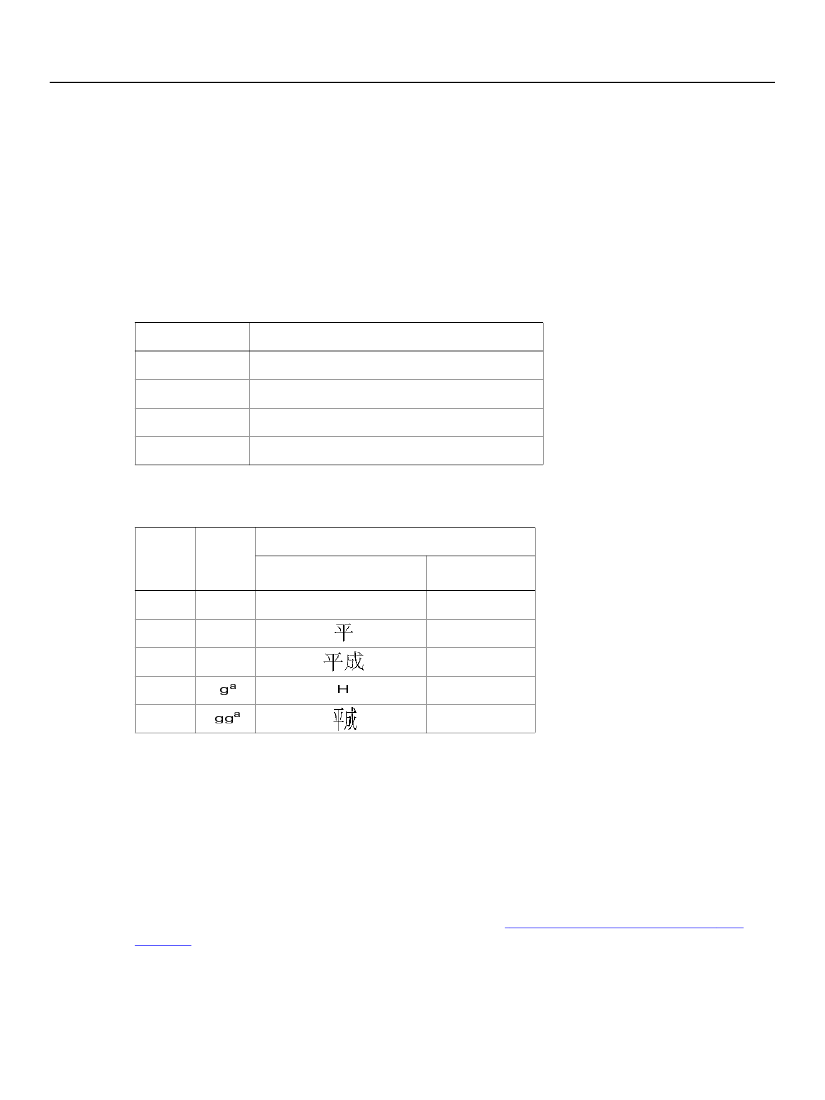
XFA Specification
Chapter 24, Picture Clause Specification
Asian Date, Time and Number Considerations
913
●
Imperial era. The origin of a year is the beginning of an emperor’s reign. In this convention, an era
identifier precedes the year. The era identifier does not necessarily include the emperor’s name. In date
picture clauses, the imperial era is called the
alternate era.
An Asian locale may use multiple
era styles
for imperial era identifiers, with each style using a different
method for representing an imperial era. The following section describe era styles for the supported
Asian locales.
Japanese Date Time Rules
The following rules apply exclusively to the locales
ja
(Japanese) and
ja_JP
(Japanese - Japan).
The last century spanned the reign of four Japanese emperors:
Imperial era
Meiji
Taisho
Showa
Heisei
Dates relative to the Gregorian calendar
1868/09/08 to 1912/07/29
1912/07/30 to 1926/12/24
1926/12/25 to 1989/01/07
1989/01/08 to present
An alternate era may be represented in several styles. For example, the following table shows the different
era styles for the Heisei era.
Date
Style picture
number symbol
1
2
3
4
5
g
gg
ggg
Example representation of the Heisei era
Character/Ideograph
H
Unicode
U+48
U+5E73
U+5E73 U+6210
U+FF28
U+337B
a.This picture symbol is expressed as full-width characters.
Korean Date Time Rules
The following rules apply exclusively to the locales
ko
(Korean language) and
ko_KR
(Korean language for
the Republic of Korea).
The Tangun era began 2333 BC. To convert the current year (2004) into its Tangun era counterpart, the
value 2333 must be added.
Korean date and times values use a single alternate era style; however, Korea uses two different sets of
ideographs, depending on the script of the prevailing locale (“Determining
page 904).
The following table shows the Tangun era ideographs represented using the supported scripts.
H
a
gg
a
g